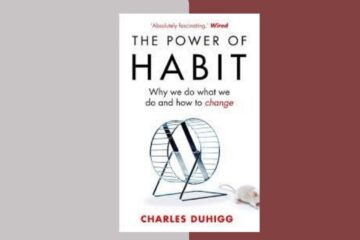Millions of copies of the highly acclaimed productivity and time management book Getting Things Done by David Allen have been sold worldwide. The book offers a novel strategy for managing projects and tasks with the goals of lowering stress, increasing productivity, and freeing up mental energy. The GTD system developed by David Allen is based on the tenet of capturing all incoming information, defining what needs to be done, organizing projects and tasks, considering objectives and priorities, and taking action.
The book provides a step-by-step guide to putting the GTD system into practice, as well as useful advice and strategies for managing every aspect of life, from personal projects to work-related tasks. Getting Things Done is a must-read for anyone looking to improve their time management skills because it has become a popular resource for people who want to maximize productivity and achieve their goals.
Part 1 – The Art of Getting Things Done
Getting Things Done by David Allen is a book that furnishes perusers with an exhaustive and viable framework for dealing with their work process and Getting Things Done in the present speedy world. The book’s first section, “The Art of Getting Things Done,” lays the groundwork for this method and introduces the reader to its key ideas and principles.
By introducing the fundamental ideas and principles that underpin the GTD system, Getting Things Done provides readers with a solid foundation. In today’s fast-paced world, readers can begin to effectively manage their workflow and achieve their goals by following the five stages of the mastering workflow and the five phases of project planning.
Chapter 1: A New Practice for a New Reality
In Getting Things Done Chapter 1 Summary, author discusses the difficulties we face in today’s world to set the stage for his system. He mentions that we are expected to be more productive than ever before and that we are constantly confronted with information, requests, and demands. As a result, we struggle to keep up with everything that comes our way, which can result in feelings of overwhelm and stress.
Author proposes a novel strategy, which he refers to as “Getting Things Done,” or GTD for short. GTD is, at its core, about writing down everything that’s on our minds, making clear what needs to be done, organizing our projects and tasks, and regularly reviewing and participating in our commitments.
We can free up mental space and lessen the cognitive burden we carry by moving everything out of our heads and into a reliable system. We are then able to be more present, focused, and productive at work and in life.
Chapter 2: Getting Control of Your Life: The Five Stages of Mastering Workflow
Capture, Clarify, Organize, Reflect, and Engage are the Five Stages of Mastering Workflow that Allen outlines in Chapter 2. He explains that each of these stages is necessary for effectively managing our workflow and that they work together to create a system that is both smooth and effective.
Getting everything that is on our minds out of our heads and into a reliable system is the first step, called capture. This could be anything that is occupying our attention, such as projects, ideas, tasks, or anything else. Author emphasizes the significance of documenting everything, no matter how insignificant or insignificant it may appear, as doing so frees up mental space and enables us to concentrate on the present.
Reviewing our captured items and determining what needs to be done with each one is the second step, or clarify. This may necessitate asking inquiries like “What is the next action?” or “Is this something that should be delegated or put off?”
Organizing our projects and tasks into the appropriate lists or folders is the third step. Author suggests utilizing a basic arrangement of records, for example, “Next Activities,” “Tasks,” “Sometime in the future/Perhaps,” and “Sitting tight For,” to keep everything coordinated and effectively open.
Engage is the final stage, and it involves carrying out our projects and tasks. He stresses the significance of concentrating on a single task at a time and utilizing our system to assist us in staying on course and progressing toward our objectives.
Chapter 3: Getting Projects Creatively Under Way: The Five Phases of Project Planning
Defining Purpose and Principles, Outcome Visioning, Brainstorming, Organizing, and Identifying Next Actions are the five phases of project planning that are discussed in Chapter 3. He explains that the purpose of these phases is to assist us in clarifying our objectives and priorities, coming up with concepts, and organizing our projects in a manner that makes them manageable and doable.
Getting clear on why we are undertaking a project and what principles or values are guiding us is the first phase, defining purpose and principles. This can assist us with remaining on track and persuaded all through the venture, and guarantee that our endeavors are lined up with our general objectives and values.
During the second phase, known as outcome visioning, people try to imagine what success will entail after the project is finished. This can assist us in staying motivated and focused on the end goal, as well as in identifying any potential obstacles or difficulties we may encounter along the way.
During the third phase, known as brainstorming, ideas are generated and various approaches to the project are considered. He emphasizes the significance of allowing ourselves to think creatively and unrestrictedly during this phase without overly pondering the viability or viability of our ideas.
The fourth stage, organizing, entails compiling the ideas that were generated during the brainstorming phase into a coherent plan. This can incorporate separating the venture into more modest assignments or sub-projects, recognizing any conditions or limitations, and figuring out what assets or backing we should effectively finish the undertaking.
Identifying the next steps, the final phase, is about figuring out the specific steps we need to take to move the project forward. He emphasizes the significance of dividing projects into manageable chunks and figuring out the next physical step for each one.
Author stresses the significance of remaining adaptable and flexible throughout the project planning process throughout this chapter. He noticed that activities can be mind boggling and erratic, and that it means quite a bit to change our arrangements on a case by case basis to remain focused and accomplish our objectives.
Part 2 – Practicing Stress-Free Productivity
The practical aspects of implementing the GTD system are discussed in depth in the second chapter of David Allen’s Getting Things Done. He provides readers with a step-by-step guide in this section on how to effectively manage their workflow and set up their time, space, and tools for stress-free productivity.
Chapter 4 – Getting Started: Setting Up the Time, Space, and Tools
Allen stresses the significance of establishing a productive mental and physical environment in this chapter. A dedicated workspace, a document and material filing system, and the right tools and technologies to support our work are all examples of this. In order to avoid burnout and maintain a healthy work-life balance, he also encourages readers to draw clear lines between their personal and professional lives.
Chapter 5 – Collection: Corralling Your “Stuff”
Collecting Your “Stuff” Allen emphasizes the significance of organizing all of our “stuff,” which includes commitments such as tasks, projects, ideas, and others, in a single system in order to efficiently manage our workflow. To capture and organize our tasks and ideas, we can use digital tools like email, note-taking apps, and project management software, in addition to setting up a physical inbox. He also gives us advice on how to process new information quickly and effectively so that we can keep up with our work and not feel overwhelmed.
Section 6: Processing: Getting “In” to the Empty
After we have gathered all of our responsibilities and tasks, author suggests a four-step method for processing this data:
- Clarify: Determine the significance of each item and the necessary action.
- Organize: Choose a category or setting for each item, such as work, personal, errands, etc. furthermore, what its need level is.
- Reflect: To ensure that we remain on course, we regularly review our commitments and priorities.
- Engage: Based on their level of importance and context, take action on the most pressing tasks.
Chapter 7 – Organizing: Setting Up the Right Buckets
In the summary of Getting Things Done chapter 7, Allen discusses the significance of having a well-organized system for managing our commitments and tasks. To create “buckets” for various types of tasks (such as work, personal, errands, etc.), he suggests utilizing a combination of physical and digital tools. and offers advice on how to effectively manage our calendars and to-do lists. He also stresses the significance of reviewing and updating our organizational structure on a regular basis to maintain its effectiveness and efficiency.
Chapter 8 – Reviewing: Keeping Your System Functional
Allen suggests reviewing our projects and task lists on a regular basis so that we can keep up with our work and remain productive. This might entail reviewing our to-do lists every day or every week, as well as periodically reviewing our larger commitments and projects. He gives tips to how to lead these audits actually, and stresses the significance of routinely refreshing our needs and responsibilities in view of changes in our conditions and objectives.
Chapter 9 – Doing: Making the Best Action Choices
Allen talks about how important it is to choose how we spend our time and energy with conscious and deliberate decision-making in this chapter. He emphasizes the importance of prioritizing our tasks according to their importance and urgency and offers suggestions for managing our attention and focus to avoid distractions and stay on course.
Chapter 10 – Getting Projects Under Control
Allen concludes with a comprehensive guide on how to use the GTD system to effectively manage larger projects in Chapter 10, “Getting Projects Under Control.” This involves organizing tasks according to their priority level and context and breaking projects down into smaller, actionable tasks. He also stresses the significance of reviewing and updating our project plans on a regular basis to guarantee that we are progressing toward our objectives and staying on course. He suggests utilizing a mix of computerized instruments like undertaking the executives programming and actual devices like whiteboards and tacky notes to successfully deal with our tasks.
In general, the Part 2 of Getting Things Done readers with a comprehensive instruction manual on how to apply the GTD method to their everyday lives. Readers can create a workflow that is both effective and stress-free by following the steps in these chapters. This will make it easier for them to achieve their objectives and effectively manage their workload. The framework is versatile to various workplaces and can be redone to address the issues of every individual client. The GTD system can assist anyone in achieving their full potential and leading a life that is both satisfying and productive with practice and perseverance.
Part 3 – The Power of the Key Principles
In Part 3 of his book Getting Things Done, author examines the key rules that support the GTD framework. The GTD workflow is built on these principles, which are crucial to achieving stress-free productivity. In this article, we will look at each of these tenets individually and talk about how important they are for keeping us organized and focused on our goals.
Chapter 11 – The Power of the Collection Habit
The collection habit is the GTD system’s first key principle. This means regularly gathering and processing all of the information and responsibilities that come our way. We free up mental space and reduce stress by recording everything in our environment and mind. Utilizing a reliable system to capture ideas, tasks, and other information as soon as they come to our attention without considering their importance or urgency is part of the collection habit. This enables us to concentrate on the current task and clear our minds.
Chapter 12 – The Power of the Next-Action Decision
The next-action decision is the GTD system’s second fundamental principle. Identifying the next physical step needed to move a project or task forward is part of this. We can avoid feeling overwhelmed and ensure that we make progress toward our objectives by breaking down tasks into manageable steps. “What is the very next physical action required to move this project or task forward?” is the question we must ask ourselves before making the decision regarding the next action. Rather than worrying about the project as a whole, we can concentrate on completing the next action by identifying it.
Chapter 13 – The Power of Outcome Focusing
The GTD system’s third fundamental principle is outcome focusing. This means putting more of an emphasis on the desired outcome or outcome of a project or task than on the steps needed to get there. We can maintain motivation and remain focused on our objectives by focusing on the desired outcome. Setting clear and specific goals and regularly reviewing and updating them as we make progress is part of outcome focusing. In addition to this, we need to ask ourselves, “What is the successful outcome I am looking for in this situation?”
In general, the GTD system’s fundamental principles are potent instruments for achieving stress-free productivity. By routinely gathering and handling our errands in general and thoughts, distinguishing the following actual activity expected to push a venture ahead, and zeroing in on the ideal result, we can remain coordinated, decrease pressure, and gain ground towards our objectives. We can ultimately lead lives that are more satisfying and successful by incorporating these principles into our day-to-day lives and achieving greater clarity, focus, and productivity.
Key Takeaways of Getting Things Done Summary
David Allen’s Getting Things Done is a comprehensive guide to stress-free productivity. The book outlines key principles for staying organized and focused on our objectives, as well as a clear framework for managing projects and tasks. The book’s key takeaways are as follows:
- The habit of collecting: It is essential for freeing up mental space and reducing stress to regularly collect and process all of the information and tasks that come our way.
- The choice for the next step: Breaking down tasks into manageable steps and avoiding feeling overwhelmed both require determining the next physical action required to move a project or task forward.
- Focusing on outcomes: We can maintain motivation and remain focused on our objectives by concentrating on the desired outcome or result of a project or task rather than the steps required to achieve that outcome.
- Getting the right tools set up: It is essential to maintain organization and reduce stress to have a reliable system for capturing and processing tasks and ideas.
- Regular checks: We can stay on track and make progress toward our goals by reviewing and updating our tasks and goals on a regular basis.
- The five phases of workflow mastery: The five stages of the GTD workflow are collecting, processing, organizing, reviewing, and doing. Mastering each stage is necessary for stress-free productivity.
Overall, our full summary of Getting Things Done provides a comprehensive method for project and task management, and the book’s key principles provide useful tools for staying organized and focused on our objectives. We can ultimately lead lives that are more satisfying and successful by adopting the GTD method and incorporating these principles into our day-to-day lives. This will allow us to achieve greater clarity, focus, and productivity.



